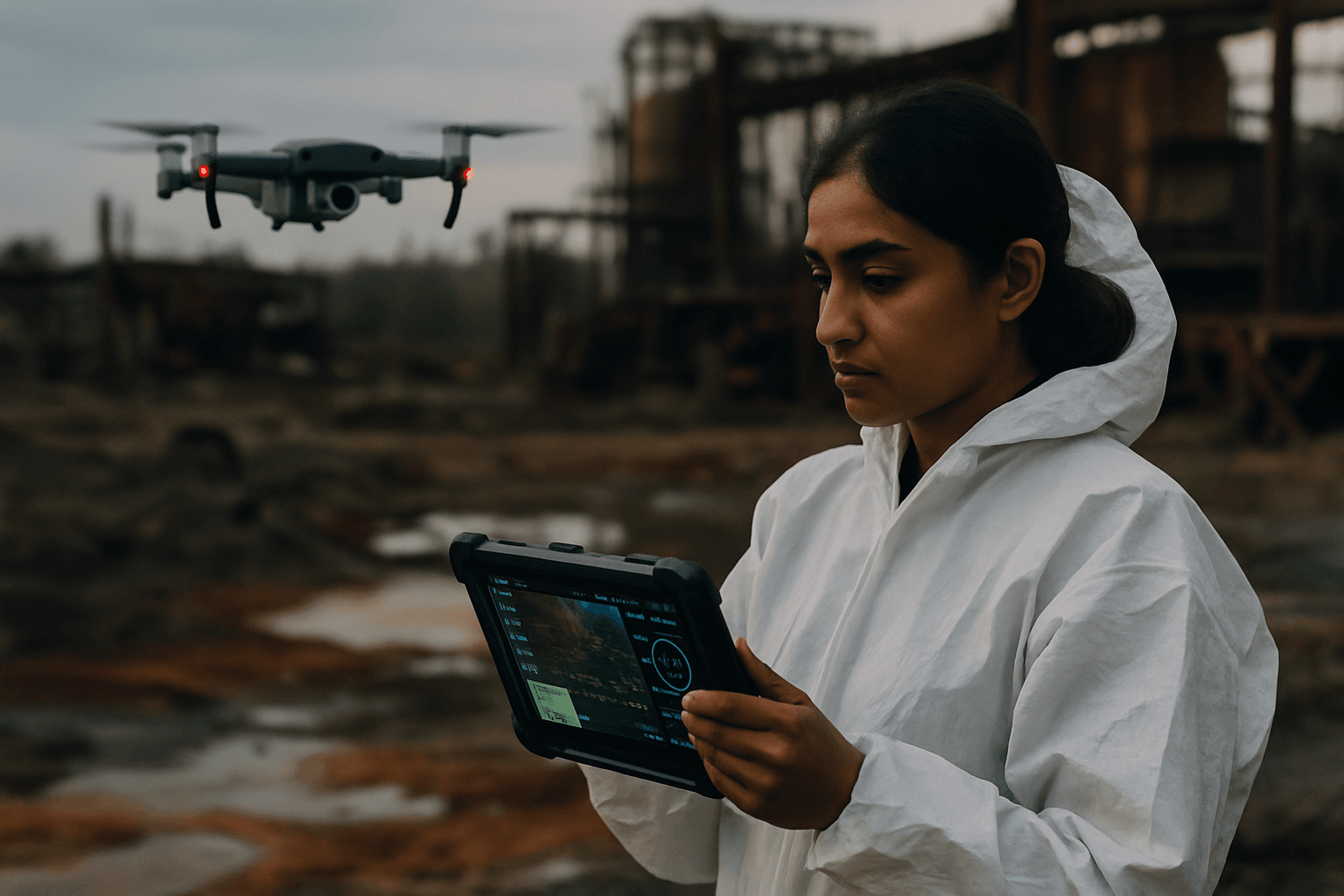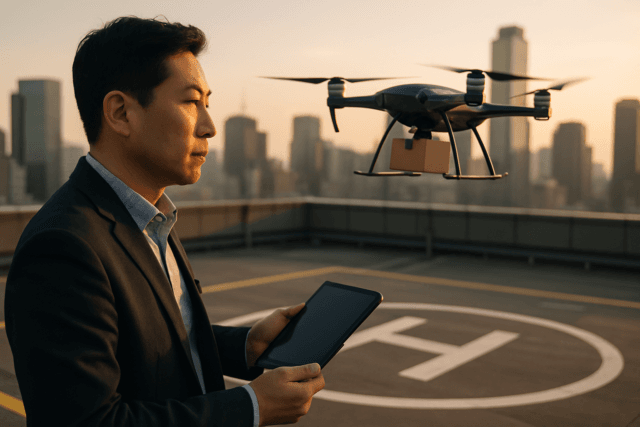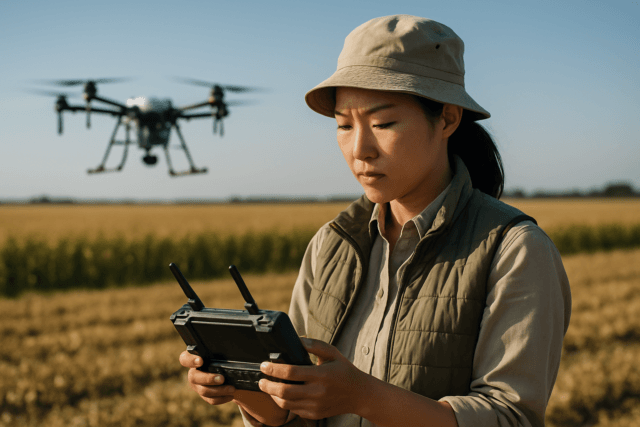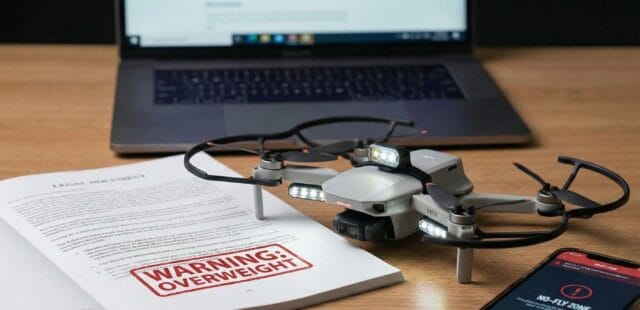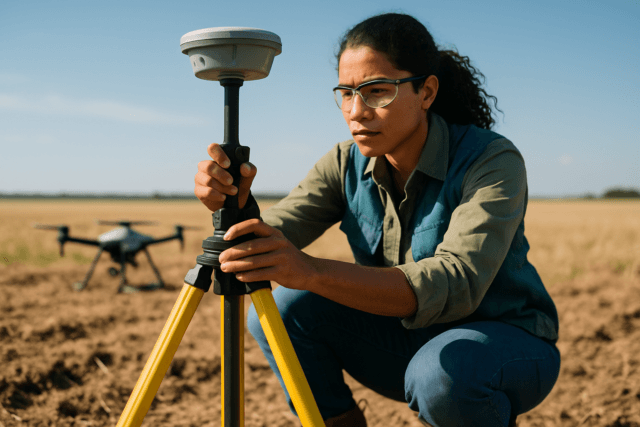Imagine a landscape scarred by industrial pollution, a radioactive exclusion zone, or the immediate aftermath of a chemical spill. These are places where human entry is fraught with extreme danger, yet obtaining critical environmental samples is paramount for assessment, remediation, and public safety. Traditionally, these perilous tasks demanded human presence, often risking lives and incurring substantial costs. However, a quiet revolution is underway in the fields of robotics and aerospace: the deployment of drones for collecting samples from highly contaminated sites, transforming how we approach environmental monitoring in the most challenging conditions.
The Perilous Task of Manual Sample Collection
Before the advent of sophisticated drone technology, collecting samples from hazardous environments was a labor-intensive and inherently risky endeavor. Teams of specialists often had to wear extensive personal protective equipment (PPE), navigate treacherous terrain, and work within strict time limits to minimize exposure to toxic chemicals, radiation, or biological agents. Methods like manual grab sampling or rope and pulley systems, while straightforward for simple checks, are dangerous for deep, unstable, or difficult-to-reach areas. This not only put human lives at risk but also introduced limitations in terms of frequency, accuracy, and the sheer volume of samples that could be safely collected.
Drones: A Game-Changer for Hazardous Environments
Unmanned Aerial Vehicles (UAVs), commonly known as drones, have emerged as a pivotal solution to overcome the dangers and limitations of traditional sample collection. By removing human operators from direct exposure, drones offer an unparalleled level of safety, making them indispensable for accessing areas contaminated by radiation, chemical spills, or other environmental hazards. Their ability to traverse dangerous environments and deliver real-time, accurate data is revolutionizing operations across various industries.
How Drones Are Employed for Sample Collection
The versatility of drones in sample collection stems from their ability to carry specialized payloads and execute pre-programmed missions with precision. These applications span various types of environmental sampling:
- Water Sampling: Drones are increasingly used to collect water samples from challenging aquatic environments such as abandoned mine pits, tailing ponds, industrial effluent discharge points, reservoirs, and coastal waters. Specialized drone systems, like the Nixie, can submerge EPA-approved sample bottles two feet below the surface, minimizing sediment disturbance and contamination. Other systems utilize Ruttner water samplers for specific volume collection. This allows for the monitoring of pollutants like mercury, selenium, arsenic, and the assessment of nutrient levels and pH.
- Air Sampling: For monitoring atmospheric contamination, drones are equipped with micro samplers, gas detectors, and specialized sensors to extract organic vapors, aerosols, and various gases. A quadrotor drone equipped with a needle trap sampler (NTS) was successfully used to extract organic vapors from industrial sources, demonstrating its effectiveness in monitoring industrial emissions.
- Soil and Surface Sampling: While less common for direct soil collection, drones equipped with high-resolution cameras, LiDAR, and photogrammetry software are instrumental in mapping and assessing soil contamination. They can detect and predict areas of high contaminant concentration, such as copper in agricultural regions, and identify illegal waste dumps by distinguishing different types of waste materials like plastic from rock or wood from concrete. Infrared cameras on drones can also identify groundwater seeps indicative of contamination by detecting temperature differences between groundwater and surface water.
Key Advantages of Drone-Based Sampling
The adoption of drones for hazardous site sampling offers numerous benefits:
- Enhanced Safety: The most significant advantage is the drastic reduction, or even elimination, of human exposure to dangerous substances or unstable environments. This mitigates risks in scenarios like chemical spills, nuclear incidents, or navigating steep pit walls.
- Improved Efficiency and Speed: Drones can conduct sampling missions much faster than traditional methods, often completing tasks in a fraction of the time it would take human teams or heavy equipment. This rapid deployment is crucial during emergency responses or for frequent monitoring.
- Access to Inaccessible Areas: UAVs can reach locations that are too dangerous, remote, or physically impossible for humans, such as high elevations, deep pit lakes, contaminated river sections, or areas with unstable terrain.
- Consistent and Accurate Data: With GPS accuracy, drones can return to the exact same sampling points and depths repeatedly, ensuring high data quality and consistency for trend analysis and regulatory reporting. Many drones can also make on-the-fly adjustments based on real-time sensor data.
- Cost-Effectiveness: By reducing the need for extensive human personnel, specialized heavy equipment, and prolonged on-site operations, drone-based sampling can significantly lower overall expenses.
Overcoming Technical Challenges
Despite the immense advantages, deploying drones in highly contaminated sites presents specific technical hurdles. These include:
- Payload Capacity and Battery Life: While battery technology has improved, allowing for longer flight times and increased payload capacities, heavy-lift drones are sometimes required for pump-operated grab samplers that collect larger water volumes. However, advancements in lighter sampling payloads are addressing this.
- Contamination Prevention: Ensuring the collected samples remain uncontaminated by the drone’s external environment or engine emissions is critical. Designs incorporating sealed samplers or systems that prevent stirring up sediment in shallow water are essential.
- Navigation and Autonomy: Operating in complex, potentially GPS-denied, or turbulent environments requires advanced navigation systems. The demand for autonomous and swarm drone technologies, which require minimal human intervention, is growing, especially for complex missions.
- Regulatory Frameworks: As drone applications expand, stringent regulatory oversight and public concern regarding safety and privacy need to be addressed, potentially limiting deployment in certain sectors.
Real-World Applications and Case Studies
The practical application of drones for hazardous sampling is already making a tangible impact:
- Nuclear Facilities and Radiation Monitoring: Drones equipped with radiation sensors (like gamma spectrometers) are used for environmental mapping and monitoring radiation levels in areas that are inaccessible or pose high radiation risks, such as post-Fukushima Daiichi disaster sites.
- PFAS Contamination: In Michigan, drones equipped with Forward Looking Infrared (FLIR) cameras have been used to identify where underground chemical contamination, specifically PFAS, may be leaking into lakes and streams by detecting temperature differences in groundwater seeps.
- Mine Site Monitoring: Drones regularly sample cooling ponds and discharged water at power plants (including nuclear facilities) and monitor water quality in abandoned mine pit lakes, which can contain heavy metals or acidic water.
- Disaster Response and Environmental Spills: Following events like the Lahaina wildfire, drones were used for aerial surveys and reality capture, aiding in damage assessment and cleanup coordination. They are also deployed to capture real-time images of toxic spills in rivers to inform remediation plans.
- Industrial Pollution: Drones have successfully monitored organic vapor emissions from industrial processing air exhausts from chimneys, identifying key pollutants downwind of chemical manufacturing plants.
The Future of Autonomous Sample Collection
The trajectory for drone technology in hazardous sample collection is one of rapid advancement and integration. The future promises even more sophisticated capabilities:
- AI and Machine Learning Integration: AI-powered drones are becoming capable of real-time data collection, automated navigation, predictive analysis, and processing vast amounts of data on the go, enabling quicker informed decisions.
- Advanced Sensor Technology: Ongoing development in compact, lightweight, and highly sensitive sensors will allow for more comprehensive and accurate analysis directly on board or with minimal sample return.
- Improved Autonomy and Swarm Technology: Autonomous UAVs that require minimal human intervention are gaining traction for tasks like aerial mapping and disaster response. Swarm technology, where multiple drones operate collaboratively, is expected to revolutionize complex missions, optimizing data collection across large, intricate sites.
- Enhanced Materials and Power: Advancements in battery technologies, such as high energy density silicon anode Li-ion batteries, and lightweight composite materials will extend flight times and increase payload capacities, further broadening the scope of applications.
- Modular and Customizable Systems: The rise of 3D-printed drones allows for cost-effective, customizable designs to meet specific mission requirements and integrate diverse sampling tools.
Conclusion
The use of drones for collecting samples from highly contaminated sites represents a paradigm shift in environmental monitoring and hazardous material management. From safeguarding human life to providing unprecedented access and data precision, these robotic marvels are redefining the capabilities of scientific research and emergency response. As technology continues to evolve, propelled by innovations in AI, sensor design, and autonomy, drones will become even more indispensable, offering safer, faster, and more effective ways to understand and mitigate the impacts of contamination on our planet.

